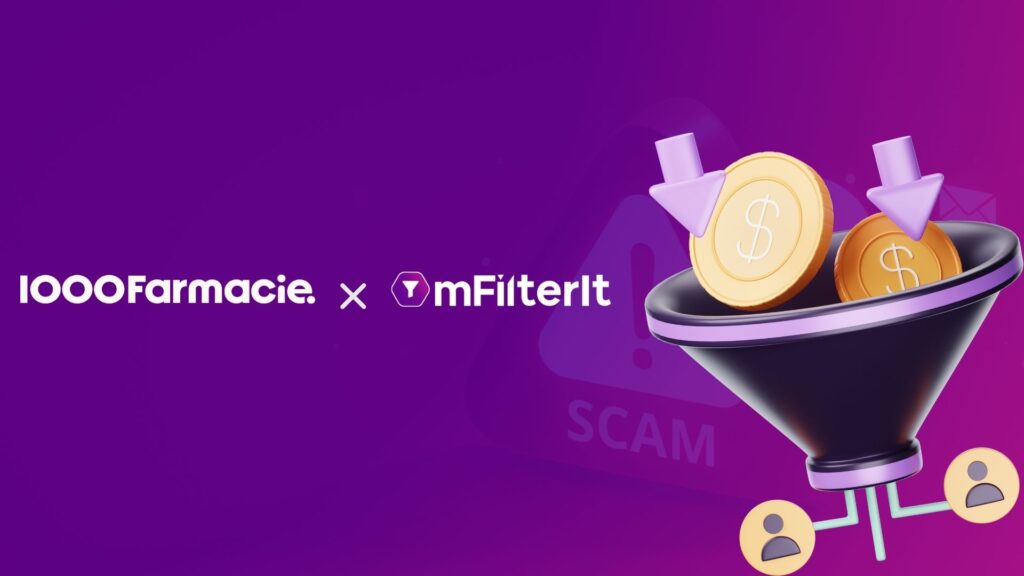The darker side of digital advertising is growing deeper and deeper: more and more attention is drawn to issues connected with unnecessary waste in ad spend, brand safety, as well as infringement concerns.
It is estimated that 30% of affiliate marketing losses can be attributed to the phenomenon of affiliate fraud. According to this trend, the losses will amount to more than $1.4 billion in 2024, according to Statista Report. Such fraudulent activities by affiliates take the form of ad fraud and brand infringement which not only wastes marketing spend but also tarnishes the brand image.
Affiliate fraud is the type of fraudulent activity that involves an affiliate’s manipulation of the performance of an affiliate marketing program to generate commissions without actually adding value to the advertiser.
These losses also highlight the necessity of investment in technology that helps in affiliate monitoring and detecting ad fraud to spare the brands from harm and preserve the sanctity of the different models in affiliate marketing.
Table of Contents
ToggleMajor Affiliate Fraud Concerns
The two ways in which any brand gets affected by affiliate fraud is when their marketing spend is wasted and their brand image takes a hit. The major threats from which any brand should be protected is:
- Ad Fraud by affiliates running your Ads: Affiliates run bots on advertising campaigns and end up showing fake performance using bots. This results in achieving lower campaign metrics and greater loss of advertising spend. The ROI’s take a hit and the only one who gains is the publisher.
- Brand Safety and Infringement Issues: Affiliates and influencers also use brand and advertisers IP like logos, brand keywords and trademarks without their authorization. Moreover, fake brand communication results in the brand suffering major reputational loss.
Affiliate Fraud in the Ads Context
Ad Fraud refers to the illegal practice of falsehood of advertising metrics to generate illegal revenue. This can happen due to fake clicks, fake impressions, fraudulent apps and more. Fraudsters trick advertisers into paying for activities that never actually happened, draining their advertising budget.
Let’s dive into knowing about types of affiliate fraud and understanding the solution to it
Types of Ad Fraud
Understanding the various forms that affiliate fraud takes is the starting point in building a countermeasure. These include some of the most common types of affiliate fraud:
-
Click Fraud:
The act of inflating the clicks on an advertisement artificially is known as Click Fraud. It is a scenario where an affiliate uses automated bots or a click farm to artificially inflate clicks, or even incentivizes real users to click on actual ads with no interest whatsoever in the material advertised.
-
Lead Fraud:
Lead fraud generates fake leads through fraudulent activities. The affiliates may use the methods of submitting fake information, using stolen data, or automation of lead generation through bots.
-
Domain Spoofing:
Fraudsters will masquerade as valid websites either for deceptions to the advertiser or to get affiliate commissions. They can use similar-looking domain names or replicate the content of an important site.
-
Cookie stuffing:
Cookie stuffing is the placement of multiple cookies on a user’s device without them knowing about it. When the sale is made, the affiliate collects his commission even though he had no justified position for the sale to be triggered.
Solutions to Prevent Ad Fraud
-
AI-ML Analysis:
Such models demonstrate the capabilities of identifying bots and other swindles because of their comprehensive automation pattern and are therefore successfully assisting in easing cases of Affiliate marketing fraud.
-
Device Fingerprinting:
Device fingerprinting, or device signature techniques enable identifying the fraudulent devices that give multiple clicks coming from a single device. Specific attributes of the device, such as browser type, and other hardware configurations, aid in identifying suspicious devices that may be part of a device farm or employ VPNs.
-
Deterministic, Behavioral and Heuristic Checks:
The traffic validation tool should be enabled with deterministic, behavioral and heuristic checks. The pattern of the actions performed by the users is examined for any discrepancies.
Monitoring Affiliates for Brand Infringement & Safety
Monitoring affiliates for brand infringement & safety is crucial for maintaining a brand’s integrity and ensuring compliance with marketing guidelines. Affiliates can sometimes engage in practices that may harm a brand’s reputation or violate its policies.
Types of Affiliate Infringements & Safety Issues
-
Brand Bidding:
Brand bidding is a scenario in which the affiliates are bidding on the branded keywords to attract users to their sites which means brand’s organic may end up being cannibalized. This also leads to increased costs in advertising and misrepresents affiliate performance.
-
IP Violation & Typo-squatting:
IP violation and typo-squatting is when affiliates register domain names, which nearly resemble the official web page of a brand. These domains give way for false redirections from users, thus allowing potential data compromise and brand impersonation.
-
Misrepresentation of Brand Information:
Affiliates sometimes mislead the branding by making false claims, over-expressing the benefits, or using unauthorized promotional content to attract users. Such misrepresentation might create confusion among customers as well as destroy the brand’s credibility.
-
Misuse of Influencer Coupon Codes:
As affiliate programs believe influencer marketing is an integral part, misuse of influencer coupon codes can take the form of an affiliate who publishes them on unauthorized platforms or channels by using those same coupon codes to commit fraudulent transactions.
-
Misuse of Influencer Brand Creatives:
Brands have creatives that influencers can promote with, but they may be mis utilized by editing them to make use otherwise than as designated or attaching misleading claims.
Solutions to Prevent Affiliate Infringements & Safety Issues
-
Automated driven Brand Asset Recognition:
Affiliate monitoring and protection are provided in its full scope in the entire digital landscape with complete brand asset validation. Whenever there is such a necessity, clients incorporate advanced algorithms to search and to monitor physical and virtual properties of brands such as logo, trademarks, product image and the contents.
-
AI driven Multichannel Monitoring:
Works as an umbrella on a multitude of online platforms such as websites, social media, paid advertisements, coupon sites, mobile applicators in a bid to protect your brand properties from these collaborators and influencers at every point of interaction with the consumers.
-
Search-Engine Monitoring:
Use our sophisticated bidding on keyword management to help in monitoring search engine results and detect the presence of affiliates and influencers who use brand keywords in paid advertisements even when the brand owners do not approval thus, bringing the potential to ruin the brand’s online ranking.
-
Compliance Monitoring:
Supervision of the activities of affiliates and influencers will be required about the institutions of the brand policy, legal provisions and guidelines. It will protect your brand even from such activities as brand abuse by affiliates monitoring and influencers.
Conclusion
Affiliate fraud and brand infringement is a severe threat to the brand reputation along with ad spending wastages. These threats have also become more advanced and that causes billions of dollars in loss. Better understanding of the types of affiliate fraud brings the right affiliate ad fraud solution to the brands, including AI-ML analysis, device fingerprinting, and compliance monitoring. In addition, they must take care of their brand integrity through monitoring and automated recognition tools. A proactive stance against affiliate fraud and brand infringement means protection of marketing budgets, with a sustained trusted and credible brand image.







